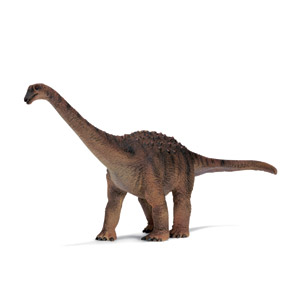New Zealand’s Very Own “Walking with Dinosaurs”
Dinosaur fossils are exceptionally rare in New Zealand, despite this remarkable and very beautiful country being home to some flora and fauna that can definitely be thought of as being prehistoric. For example, there is the Tuatara (Sphenodon punctatus), which belongs to an otherwise extinct reptilian group called the Rhynchocephalians and this little reptile is found nowhere else in the world. The country can also boast some of the finest examples of cycad groves (Cycadales) on the planet.
Dinosaur Footprints
However, evidence for dinosaurs having lived in New Zealand, which formed part of the huge southern super-continent of Gondwana has been hard to find. Very few body fossils have been discovered and trace fossils such as dinosaur tracks are even rarer, but for GNS Science* geologist Greg Browne, the next few months sees some Titanosaur footprints that he found forming part of a touring exhibition that aims to educate New Zealanders about their prehistoric heritage.
GNS Science was founded in 2006 it was formerly known as the Institute for Geological and Nuclear Science Ltd.
The exhibition entitled “Dinosaur Footprints: A Story of Discovery” will open at the prestigious Auckland War Memorial Museum in June before touring the country. The footprints, the first evidence of such dinosaurs having lived on what is now known as South Island were found in sedimentary rocks north-west of the town of Nelson. At first, scientists were unsure whether the strange marks in the rocks represented the tracks of giant plant-eating dinosaurs, but the circular footprints, some of which are over sixty centimetres in diameter have been confirmed as being the tracks produced by a long-necked dinosaur referred to as a titanosaur.
Titanosaur
To read an article on the footprints published by Everything Dinosaur: Dinosaur Tracks from New Zealand.
Visitors to the exhibition will be able to learn all about the fossil discovery, the prints have been identified from more than half a dozen locations and they stretch over an area of around ten kilometres. Replicas and casts of the prints will be on display and artist Dave Gunson has created a watercolour illustration depicting a pair of giant titanosaurs roaming across a Late Cretaceous, sandy beach, the moment in time when the trails were formed.
An Illustration of a Typical Titanosaur – Saltasaurus
Picture credit: Everything Dinosaur
The Titanosaurids
The titanosaurids were the last group of sauropod dinosaurs to evolve and although the Sauropoda seemed to have gone into decline in the Northern Hemisphere as the Cretaceous progressed, titanosaurs made up a significant proportion of the herbivorous biomass on the southern continents. This group of long-necked dinosaurs persisted until the very end of the Cretaceous.
For models and replicas of titanosaurs and other prehistoric animals: Wild Safari Prehistoric World Models.
Although Greg Browne and his team are not able to identify the genus that made the tracks, the footprints vary in diameter and indicate that the dinosaurs ranged in size from about two metres to more than six metres in length. These animals were probably moving as a herd and chose to walk close to the shore as this would have been an easier and probably safer route than attempting to move as a group through the forest that was located further inland. The roughly circular prints probably represent a single species.
The current tour Itinerary is as follows:
- Auckland War Memorial Museum 13th June until July 27th
- Rotorua Museum 6th September until October 12th
- New Zealand National Aquarium, Napier over Labour Weekend – from January 11th 2015
- Puke Ariki, New Plymouth 17th January until March 22nd
- Nelson Provincial Museum from July through to September 2015
A spokesperson from Everything Dinosaur commented that is was great to hear that the story of these enigmatic and extremely rare footprints was going to reach a wider audience. He encouraged New Zealanders to attend, to have the opportunity to get up close to the evidence for dinosaurs roaming New Zealand seventy million years ago. It was also important for the work of sedimentologists such as Greg Browne to receive wider public recognition.
It is likely that more venues will be added to the tour schedule.







Leave A Comment